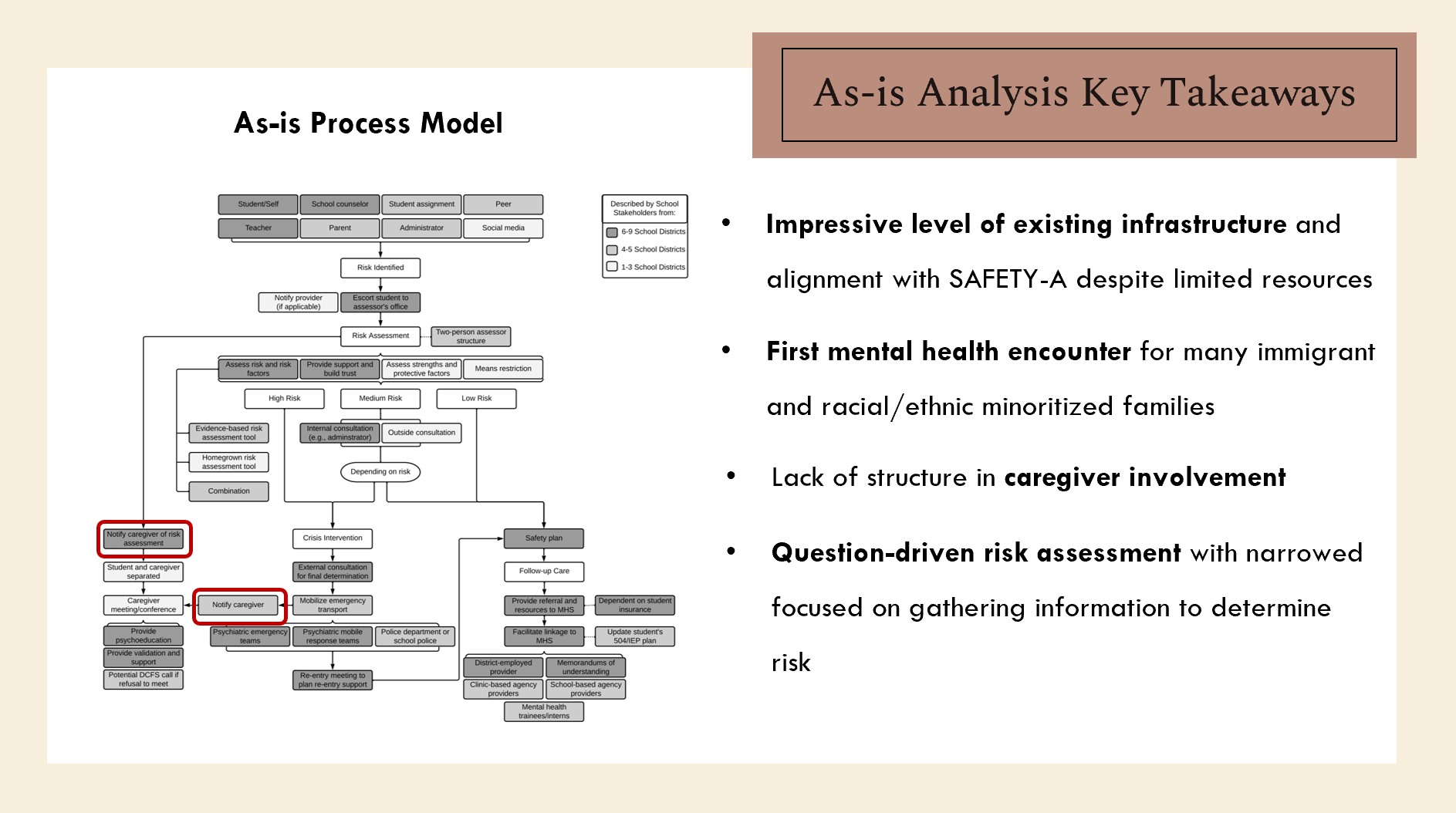What can we learn from our school district partners on how to implement a suicide prevention intervention in schools primarily serving Asian American and Latine families?
This study was part of a larger effort within the CARE in Youth Mental Health Lab (PI: Dr. Anna Lau) to reduce disparities in follow-up care among racial/ethnic minoritized youth identified with suicide risk in schools.
Our research team previously learned that racial/ethnic minoritized students can feel traumatized from police transport and hospitalization following school-based suicide risk assessments, while their parents can feel disempowered, which may deter them from seeking follow-up care. I was awarded the Patrick & Lily Okura Research Grant and Immigrant Youth Task Force Fellowship to learn how we might implement the Safe Alternatives for Teens and Youth-Acute (SAFETY-A) - a strengths-based, trauma-informed family intervention for suicide - in schools, with the broader goal of diverting minoritized youth from harmful system encounters.
Through interviews and focus groups with 37 school district leaders and providers, we conducted an as-is analysis of existing suicide prevention, intervention, and postvention practices across nine Southern California districts primarily serving Asian American and Latine students. We then compared the as-is model to a to-be model with SAFETY-A integrated. We also asked participants about barriers and facilitators to implementing SAFETY-A in their school districts. Not only did this study yield important information for our implementation efforts, it also served as an entry point to partner with district leaders to adapt and implement the SAFETY-A in their schools. See below for a snapshot of our results or check out our publication!


